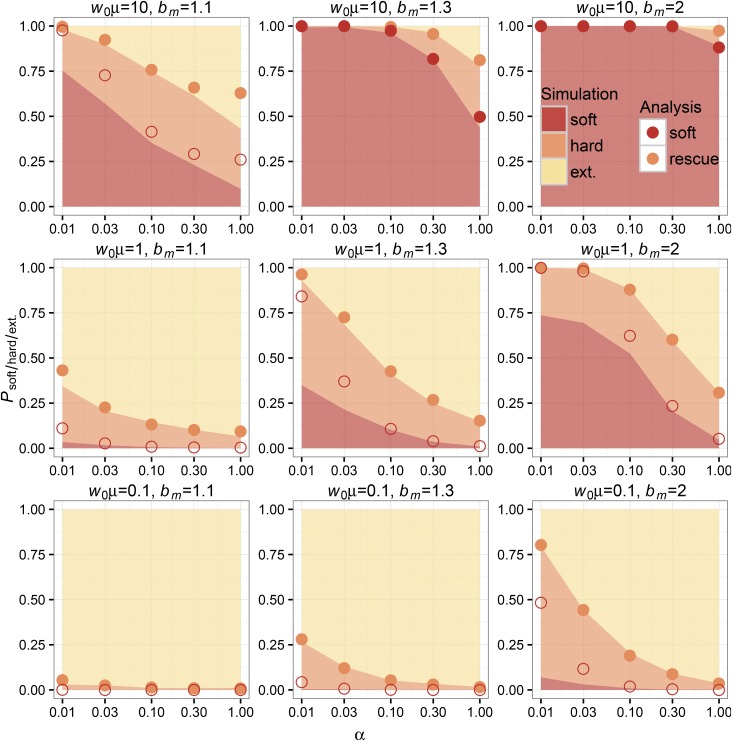Figure 4.
Simulations and analytic predictions for evolutionary rescue in high-density scenarios. The probabilities of observing rescue via soft selective sweeps, rescue via hard selective sweeps, or extinction as a function of the decline rate α (logarithmic scale) measured over 1000 simulations (see Methods) for each combination of model parameters are indicated as stacked bar plots. The color key indicates shading for simulation outcomes. Population-scale mutation rate increases between plots from bottom to top, and unscaled per-capita mutant birth rate increases between plots from left to right. The analytic predictions for each parameter combination show (bottom red points) and (top orange points). For analytic predictions of points where adaptation are shaded. Our analysis has high concordance with the observed probability of rescue for each parameter combination. As in the low-density scenario, our analysis has good concordance with the observed probability of rescue via soft sweeps for most parameter combinations, except in instances where our independence assumption breaks down and for low decline rates (bottom and middle rows, leftmost α values). Evolutionary rescue is less likely for more parameter combinations in the high-density scenario because the wild-type population must decline before establishment of mutants is likely (see Figure 2).

